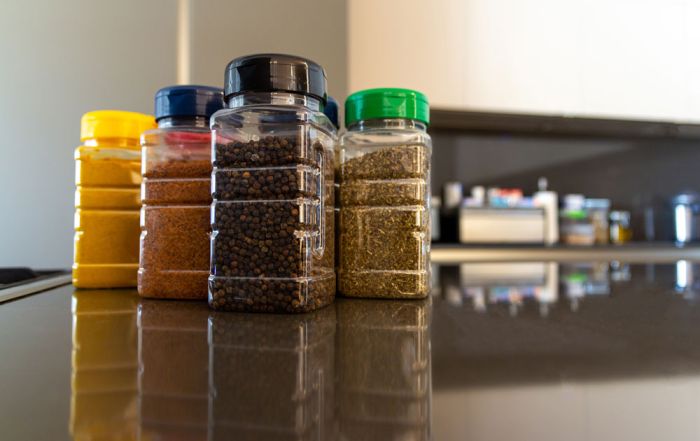Salmonella Outbreak Linked to Onions Sickens over 800
A month or two ago in the blog, we discussed the importance of having a food traceability system within your operation. Again, this past month, we were reminded of why such a system can be so very important. If you are in the foodservice industry, you have likely been following, or at least heard about the Salmonella Oranienburg outbreak. If you haven’t, you likely might be living under a rock. To-date, cases have gone back as far as late-May 2021 and have been identified in 37 states and Puerto Rico.
Although, the actual number of people impacted is likely much higher because many people recover from Salmonella without seeing a medical professional, as of late-October 808 illnesses and 157 hospitalizations have been linked with the outbreak. Fortunately, no deaths have been reported as of this publishing in early November 2021.
While the investigation is on-going, ProSource Produce, LLC (or otherwise known as ProSource, Inc.), based in Hailey, Idaho, and Keeler Family Farms, based out of Deming, New Mexico have been identified as the two main suppliers of the whole, fresh onions, which were imported from Chihuahua, Mexico. The onions in question can be either red, yellow, or white, and are various sizes (e.g., jumbo, medium) and in cartons ranging from five to 50 pounds and in mesh sacks ranging from two to 50 pounds. Distributors and/or brands who also carried the onions include Big Bull, Peak Fresh Produce, Sierra Madre, Markon First Crop., Markon Essentials, Rio Blue, Rio Valley, and Sysco Imperial. Four other recalls have been issued from suppliers who used the recalled onions in processed products or have otherwise repackaged them in other types of products.
Because the shelf life of onions is quite long, it is important to carefully check your inventory records to ensure you have not received a shipment of the recalled product.
Because the shelf life of onions is quite long, it is important to carefully check your inventory records to ensure you have not received a shipment of the recalled product. If you receive product from a broadline distributor, you have likely been contacted if you received the product. But don’t rely on your supplier, practice your own due diligence. If you don’t have the packaging, cannot track down the invoice for the current stock of fresh onions, or are simply not quite sure where the product came throw it out. I’d rather you throw out a few hundred dollars of onions than to be involved in a foodborne illness outbreak.
The specific cause has not yet been identified. It is possible that we may never know the actual source, but the Food and Drug Administration and Centers for Disease Control and Prevention investigation is on-going. You might recall a similar outbreak of Salmonella Newport 2020 that sickened 1,127 individuals and hospitalized 167 in the U.S., not including those in Canada. At the time, it was the largest Salmonella outbreak in the U.S. in the last decade. The Food and Drug Administration was not able to identify a conclusive cause of the outbreak but surmised that it could have been an irrigation issue because of the water source tests that found Salmonella Newport near the fiends in which it was grown.
The recall highlights the importance of active managerial control and having an active and proactive approach in your operational food safety plan. I did promise in my last blog we would discuss a bit more this month, but rest assured, it will be the focus of my blog later this month.
Be sure to join us on November 17th for our SafeBites webinar, entitled, “Practicing Good Agriculture: A Primer for Foodservice Operations”, which is quite timely given the onion outbreak we are experiencing. The webinar will be especially pertinent for those of you who current work with a local farmer in procuring produce or are looking to start a farm-to-table program for your foodservice operation. Be sure to register today. Risk Nothing.
READ MORE POSTS
Cross Contamination and the Surfaces that go Unnoticed
In October, I ran across a new research study published in the Journal of Food Protection in early-September. The article explored cross contamination in consumer kitchens during meal preparation. One of the authors was a previous SafeBites presenter, Dr. Ellen Shumaker, at North Carolina State University. Although the setting was consumer kitchens and not the commercial kitchen many of you deal with daily, the findings were very applicable to what we often see in the foodservice setting.
Emergency Preparedness: The Not-so Calm After the Storm
If you and your foodservice operation have been hit by an emergency or other disaster, what comes next and how do you move forward? Much of the answer to this is predicated on the actual disaster that you are dealing with – a flood is certainly a much different than a fire, but some of the food safety considerations remain the same if your business has been left intact and has not been damaged by the disaster.
Emergency Preparedness and Responding to a Disaster with Food Safety in Mind
As I write the first blog this month, the realities of the devastation in Florida are coming to light as we also deal with the aftermath of Hurricane Fiona, which impacted Puerto Rico late in September. Recent news has been focused on the recovery efforts for all who have been impacted. Thus, I thought it would be fitting this month to discuss emergency disaster planning resources in our first blog and delve into recovering from a disaster in our second blog later this month.
During National Food Safety Education Month is it time for Your Food Safety Refresher?
You see them in every restaurant and commercial foodservice operation across the United States. Framed and proudly displayed, often by the kitchen, the cashier, the kitchen entrance, or the service counter - just as they should be. To what am I referring? The food safety certification certificates, of course!










